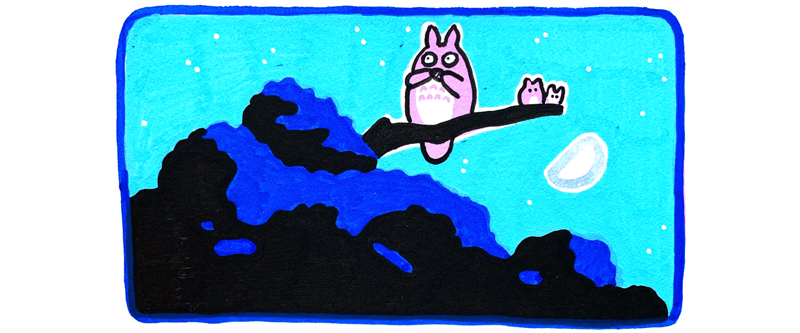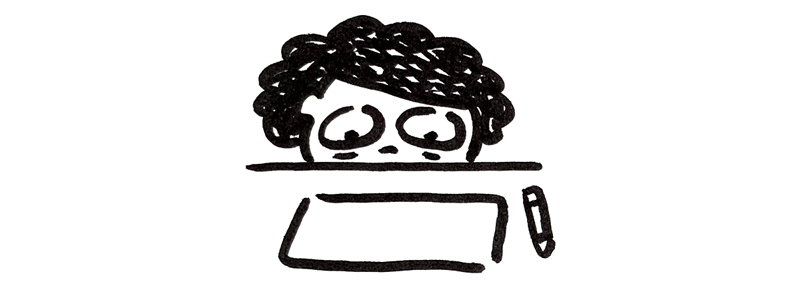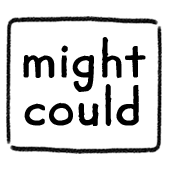
Lately, I’ve been in a bit of a creative rut. I’ve been trying and experimenting with different techniques to pull myself out, but still, the struggle is there. Unfortunately, ruts, blocks, and low points are just a natural part of the creative process. We all go through periods of inspiration and periods of frustration. But it’s still no fun to struggle.
One thing I’ve learned over time, is there’s no magic way to get out of a creative rut. What works for one artist won’t necessarily work for the next. And what worked for you last time you were stuck, might not work the next time. We’re constantly having to experiment with new ways to pull ourselves back to our art. Sometimes it’s just being patient and letting the block pass.
I struggled a lot writing this week’s essay. Faced again with this rut that wouldn’t go away, I decided to experiment with patience and acceptance. I acknowledged to myself that I was in a rut. Instead of fighting against the struggle, as I had been, I gave in to it. I accepted that this was my present state—I’m stuck.
Once I stopped struggling with my struggling, and accepted my present creative state, it became easier to see the real issue: I was drained. I’ve been in go-go-go mode both creatively, professionally, and personally for too long. I have been making, making, making, doing, doing, doing, only stopping to eat and sleep. Eating and sleeping restores the physical needs of my 8-month pregnant body, but what about my creativity and imagination?
I have been so focused on my output, that I haven’t given my input the attention it needs. Just as I can’t keep making this little human in my womb without nurturing my body, I can’t keep making essays, drawings, and art without nurturing my creativity.
And so, that’s my new priority: I am re-filling my creative well.
There are many ways to do this, but the animator, Miyazaki is a go-to source of inspiration for me. Today, I watched the first episode of a new documentary, 10 Years with Hayao Miyazaki. I highly recommend it, whether you’re stuck in a rut like me or not. Miyazaki is a surprisingly relatable person, and it’s encouraging to know he struggles with the same things we all do.
Below is a list of my 8 lessons on creative block from the film. Watching this documentary has alleviated some of the intense pressure I felt on my shoulders and has begun to bring life back into my imagination. I’m not naive enough to think I’ve completely emerged from my rut after watching one video, but I’m making progress, and that gives me hope to keep going. Just like Miyazaki shows us, creative frustration is normal, and this too shall pass.

1. You can’t rush the creative process.
Miyazaki begins each day with a similar routine, getting to his studio at 10am. He is currently supposed to be working on the very early stages of his new film, Ponyo. He begins the day working on non-film work, drawing a manga he says is “just for fun”. Later that day, he attaches a video camera to car and drives around filming the roads. He says,
“I can’t just sit at my desk. Ideas come from the unexpected. I just do it because I find it interesting.”
–Hayao Miyazaki
The day ends, and no work was done on his new film. Two weeks pass like this, with no progress on Ponyo. But Miyazaki knows: you can’t rush the creative process, and all of those “just for fun” things he’s doing are actually a vital part of the work. He’s in the idea incubation stage, and you can’t force ideas. He knows he has to allow himself to wander.
2. The beginning of anything new is inherently difficult.
As soon as Miyazaki begins working on the film, doubt and anxiety come rushing in. He draws a first pass at the opening scene, and quickly throws it away. He says,
“Nothing’s working today. Don’t waste time shooting this. Don’t think you can always capture what you want. I’m sleepy. Time for a nap. Good night.”
–Hayao Miyazaki
He emerges from his nap still frustrated. He says,
“Creating is like dropping a fishing line into his mind.”
–Hayao Miyazaki
3. The creative process is a series of highs and lows.
Later on Miyazaki admits:
“I don’t know. I’m in a rut. This morning I thought we had a starting point. But now I have doubts.”
–Hayao Miyazaki
Eventually, he finished the first image board which spurs a bunch of new ideas and energy. But then, three days later, he’s back to the anxiety, saying “No, this is not right”, and throws away the opening scene. Miyazaki realizes he’s now in the thick of the creative process:
“I’m back in this again. The film making has begun.”
–Hayao Miyazaki
After 3 weeks, the image boards are beginning to come together. But Miyazaki is still not satisfied:
“I just can’t pin it down. I feel like I’m drifting.”
–Hayao Miyazaki
4. Inspiration is everything.
Miyazaki tells a story of when he had major revelation from seeing one painting at the Tate Museum in Britain. He says,
“I thought, my work is shoddy compared to those artists. I was just astonished. At that point it became clear to me. Our animation style could not go on as before. I mean, I’m at a dead end.”
–Hayao Miyazaki
Again, he feels like he’s in a rut, and wants to do something new, but doesn’t know where to go. He says,
“Talent gets worn out from use, day by day. Inspiration is everything. I don’t know what I’m doing.”
–Hayao Miyazaki
That night, he puts the film work aside and takes a break. He plays the song Ride of the Valkyries and writes letter to his staff. The next day, something clicks into place, and he creates the image board for the film’s most critical scene: an image a a valiant Ponyo riding on a wave of fish. When asked where the idea came from, he says, “Probably rise of the Valkyries!”
He uses pastels on the image board, a tool he’s never worked with before, trying to tease out the new style and simple animation.
“It looks different now. Interesting. I could add highlights and shadows, but I don’t want to. It’d be the same old style. I’ve done enough of that. I don’t hate it. But this film is different.”
–Hayao Miyazaki
The next morning, his team comes in, and proclaims, ‘You’ve got it!’ Miyazaki says “the essence of this film is in this one picture.” You can see that he feels he’s made a major breakthrough.
5. The way you work changes with time—no point dwelling on it.
Miyazaki talks about how his age is starting to affect the way he works, but he’s able to acknowledge and accept these changes without fighting against it. He knows things change over time.
“I can feel it everyday, the limit of my ability. It takes so long to get things done nowadays. I really can’t help it. No point dwelling on it.”
–Hayao Miyazaki
6. Creativity needs periods of isolation to get lost in your own thoughts.
With three weeks left until the team begins animating the film, Miyazaki goes into isolation, staying at a friend’s house, surrounded by ocean views and boats, much like those seen in the completed film. Here, he begins to show irritation and grumpiness:
“Stop shooting. This isn’t work related. Leave me alone today… Can’t you tell when someone wants to be left alone?”
–Hayao Miyazaki
The documentary directors notes that Miyazaki is “pushing himself to the limit.” He then asks Miyazaki if he needs solitude to make a film, to which Miyazaki answers:
“How would I know? Everybody’s different. I want to stay grumpy. That’s who I am. I want to get lost in my own thoughts. That’s not socially acceptable, so I plaster a smile on my face. Everyone feels like that sometimes. Why would I smile when I’m like that? Film’s are made at moments like these. The more we get into the film, the more irritable I get.”
–Hayao Miyazaki
7. The challenge is what makes it worth doing.
At the end of the documentary, the film moves to the animation stage. From here the director notes the ‘journey to completion will be long and arduous.”
We see images of a frustrated Miyazaki muttering to himself, “This isn’t it” and “It’s not working” and “I’m done for today.”
His producer, Toshio Suzuki notes,
“We are trying something new this time. So he’s a little more on edge than normal. But the challenge is what makes it worth doing.”
–Toshio Suzuki
8. You have to be patient.
Later, Michiyo Yasuda, Miyazaki’s color designer, says
“Something very novel, even mad, may come out of that head of his.”
–Michiyo Yasuda
And sure enough, 11 months after Miyazaki began, “a single frame of Ponyo emerges.”

<3,
Christine

